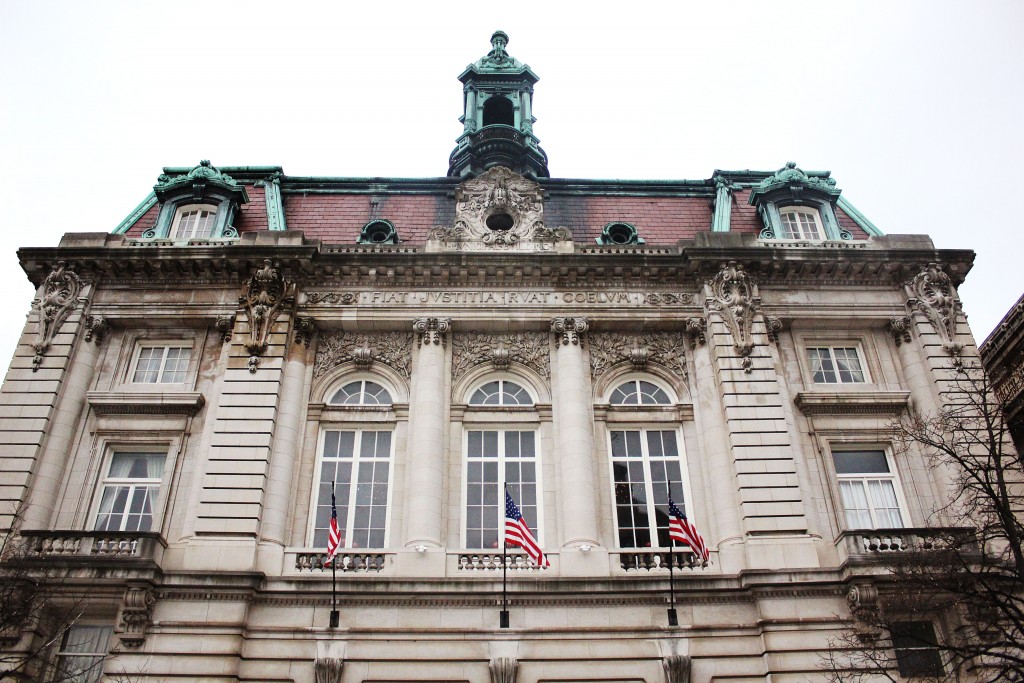
For those who simply can’t bear to take another Instagram of our own on-campus clock tower, it’s time to expand your horizons by venturing Downtown. Just a few steps away from the bars are a slew of architecturally astounding buildings. In the first installment of our Binghamton architecture tour, we discuss the city’s history-filled government buildings.
Government Plaza
Government Plaza is the crown jewel of the government buildings in Binghamton, as its complex contains the Edwin L. Crawford County Office Building, the State Office Building and Binghamton City Hall. Built as part of a massive urban renewal program in Binghamton during the 1960s and 1970s, Government Plaza is named so because its three buildings originally framed an elevated plaza above the parking lot’s current location. The State Office Building, which is the central of the three buildings, towers above the others at 18 stories high. Although it was contaminated as the result of a fire in 1981, it has housed offices for various state agencies since 1994, and certain floors of the building are frequently used for local events.
Former Binghamton City Hall
Just up the street from the current Binghamton City Hall is the former city hall. Now the Grand Royale Hotel, it was constructed in the late 1890s and served the city of Binghamton until the middle of the 20th century, when the new City Hall opened as part of Government Plaza. It is built in the Second Empire style, which calls upon elements of Baroque architecture and puts the building at visual odds with most other structures in Downtown Binghamton. The former City Hall features a mansard roof and a distinct cupola — a small dome for a bell. Because of the use of copper elements in the roof, many of the architectural features have a green hue.
George Harvey Justice Building
Situated across from Government Plaza on Hawley Street, the George Harvey Justice Building houses many of Broome County’s legal offices and provides an easy connection between the Crawford County Building and the Broome County Courthouse. This structure was rededicated in 2009 after having been vacant for nearly a decade. Around the exterior at the fifth floor level, there are reliefs illustrating events significant to the area, including operation of the Chenango Canal and the first court session in the county’s history. When the interior of the building was being reconstructed for the reopening in 2009, architects used salvaged marble, aluminum and gypsum, and maintained many of the Art Deco style features from the original construction.
Federal Building and U.S. Courthouse
The Federal Building and U.S. Courthouse in Binghamton is located on Henry Street, a few blocks away from the local and state government offices in the city. In addition to housing a post office, the building also contains the offices for congressional representatives and Senator Chuck Schumer. Original plans for a new federal building and courthouse in Binghamton were begun prior to World War I, but the war and subsequent bureaucratic authorization issues pushed the building’s ground breaking to 1932. Eventually completed during the Great Depression by local architectural firm Conrad and Cummings, the Federal Building and U.S. Courthouse combines the geometric and angular elements of Art Deco, the columns of Neoclassicism and the form of Modernism into its architecture. The interior of the building contains a range of marbles, original Art Deco light fixtures and eight murals painted by local artist Kenneth Leland Washburn.
Broome County Courthouse
The Broome County Courthouse, responsible for Binghamton’s arterial Court Street, was designed by prominent architect Isaac Perry in the 1890s. Perry is also responsible for New York State Inebriate Asylum on the East Side of Binghamton and the “Million Dollar Staircase” in the New York State Capitol Building in Albany. The current courthouse is the fourth built on the same site, and makes use of the previous courthouse’s foundation. The building is constructed out of limestone, and has terracotta tiles and copper cornices. On the dome on the top of the Courthouse stands a statue of Lady Justice who, interestingly, is not blindfolded to represent “blind justice,” which is a common convention of her depiction. In front of the stairs leading to the main entrance of the Courthouse is a statue of Daniel Dickinson, the first president of the village of Binghamton and the man for whom the Dickinson Community is named.


